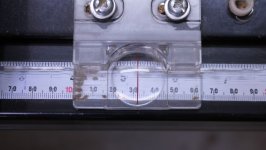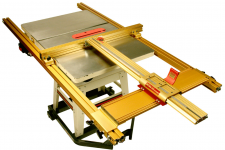To avoid taking the current safety thread totally off topic I will quote Chuck S here.....
There is a very good reason why not using the scale on the saw, but a tape measure is the right thing to do.
If you measure, for example, an opening and need to cut a piece to the exact width of the opening, you must set the fence with the tape measure (unless the tape measure used is the same as the scale on the saw, which is usually not the case).
This is the exact reason why I had a standard aluminium calibration "stick" made that is used to ensure all five of the fences on my machines cut to the same length and the measuring tools I use match the fences. It might not be to metrology standards but for woodwork I always get what I measure.
There is a very good reason why not using the scale on the saw, but a tape measure is the right thing to do.
If you measure, for example, an opening and need to cut a piece to the exact width of the opening, you must set the fence with the tape measure (unless the tape measure used is the same as the scale on the saw, which is usually not the case).
This is the exact reason why I had a standard aluminium calibration "stick" made that is used to ensure all five of the fences on my machines cut to the same length and the measuring tools I use match the fences. It might not be to metrology standards but for woodwork I always get what I measure.



